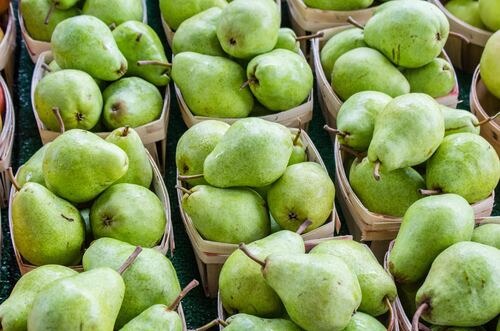W31: Pear Update

In W31 in the pear landscape, pear production in the European Union (EU) for 2023 is projected at 1.7 million tons, a 13% year-on-year (YoY) decrease. EU Conference pears production is estimated at 928 thousand metric tons (mt), 8% YoY higher, with Belgium, Spain, and Poland contributing to the increase. However, production in the Netherlands and Italy is lower. The apple supply in Doyenné du Comice will decrease by 17% YoY, while Abate Fetel production is expected to be around 53 thousand tons due to poor harvest in Italy. The total Italian pear production is 187 thousand tons, a 63% YoY decrease, and a 20% less harvest is expected due to recent weather. Additionally, pear production in the United States (US) is predicted to decrease by 3.7%, resulting in a total of 502 thousand tons. On the other hand, China's pear production is expected to increase by 10%, reaching 17.6 million tons.
Tridge’s analysis indicates that Italian pear producers face challenges like changing weather patterns, pest and disease pressures, labor shortages, and declining profitability. However, access to the Chinese market offers hope for revitalization and relaunch. China's large population and growing middle-class consumers could provide a vast market for high-quality fruits, potentially boosting the industry's success. Italian pear exports declined by 31% in 2022, with the EU, with Germany, France, and the United Kingdom (UK) as the main destinations. Access to the Chinese market allows Italian growers to diversify their customer base and tap into the growing demand for high-quality fruits. South Africa has become a new supplier in the Chinese market, contributing to import growth. This access offers hope for Italian pears growers, revitalizing the industry, fostering economic growth, and strengthening trade relations between Italy and China.
Lastly, according to AFRUCAT's projections, the Catalonia region in Spain will produce a higher pear harvest in 2023 compared to 2022. The pear harvest is expected to reach 126 thousand tons, an increase of 31% YoY. Specifically, Lleida is predicted to produce 121.8 thousand tons, a 32% YoY rise, while Girona is expected to yield 3.2 thousand tons, a 20% YoY increase. Tarragona's forecasted production is 870 tons, marking a 61% YoY growth, while Barcelona is estimated to contribute 313 mt, with a slight decrease of 8% YoY. Additionally, the harvest is projected to occur 7 to 10 days earlier compared to 2022.





